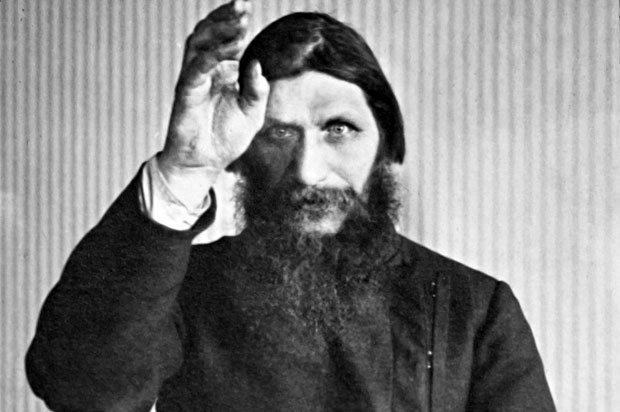Grigory Rasputin, a self-fashioned Russian holy man, is murdered by Russian nobles eager to end his sway over the Royal family.
Rasputin won the favor of Czar Nicholas II and Czarina Alexandra through his ability to stop the bleeding of their hemophiliac son, Alexei. Although the Siberian-born peasant was widely criticized for his lechery and drunkenness, he exerted a powerful influence on the ruling family of Russia. He particularly influenced the czarina, and when Nicholas departed to lead Russian forces in World War I, Rasputin effectively ruled Russia through her.
In the early hours of December 30, 1916, a group of nobles lured Rasputin to Yusupovsky Palace, where they attempted to poison him. Seemingly unaffected by the large doses of poison placed in his wine and food, he was finally shot at close range and collapsed. A minute later he rose, beat one of his assailants, and attempted to escape from the palace grounds, where he was shot again. Rasputin, still alive, was then bound and tossed into a freezing river.
A few months later, the imperial regime was overthrown by the Russian Revolution.
Also on this day…in 1922…exactly six years after Rasputin was murdered, Russia, the Union of Soviet Socialist Republics (USSR) is established, comprising a confederation of Russia, Belorussia, Ukraine, and the Transcaucasian Federation (divided in 1936 into the Georgian, Azerbaijan, and Armenian republics). Also known as the Soviet Union, the new communist state was the successor to the Russian Empire and the first country in the world to be based on Marxist socialism.
During the Russian Revolution of 1917 and subsequent three-year Russian Civil War, the Bolshevik Party under Vladimir Lenin dominated the soviet forces, a coalition of workers’ and soldiers’ committees that called for the establishment of a socialist state in the former Russian Empire.
In the USSR, all levels of government were controlled by the Communist Party, and the party’s politburo, with its increasingly powerful general secretary, effectively ruled the country. Soviet industry was owned and managed by the state, and agricultural land was divided into state-run collective farms.
In the decades after it was established, the Russian-dominated Soviet Union grew into one of the world’s most powerful and influential states and eventually encompassed 15 republics–Russia, Ukraine, Georgia, Belorussia, Uzbekistan, Armenia, Azerbaijan, Kazakhstan, Kyrgyzstan, Moldova, Turkmenistan, Tajikistan, Latvia, Lithuania, and Estonia.
In 1991, the Soviet Union was dissolved following the collapse of its communist government.


